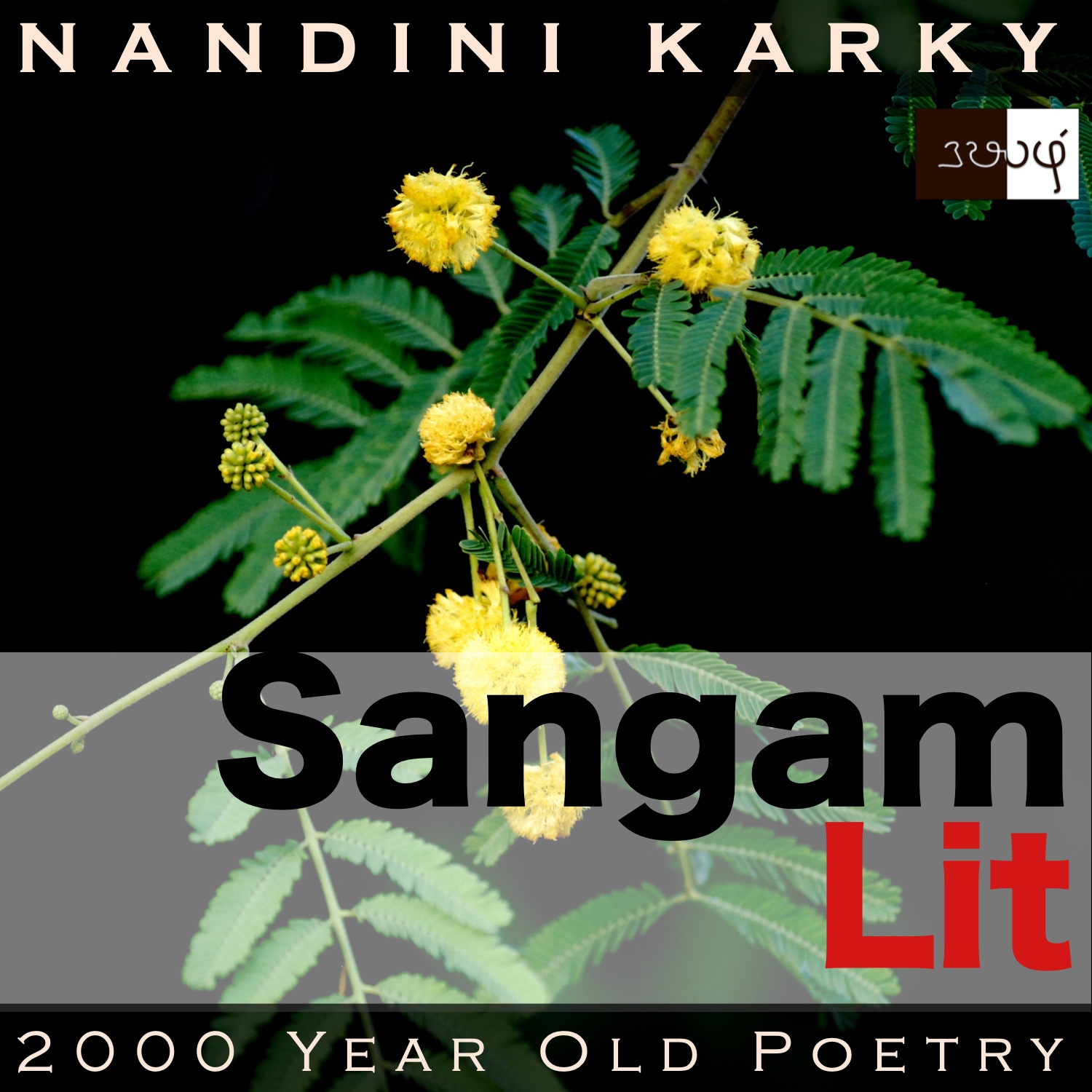Podcast: Play in new window | Download
Subscribe: Apple Podcasts | Spotify | Amazon Music | Android | iHeartRadio | TuneIn | RSS | More

In this episode, we perceive the effect of seasonal winds, as depicted in Sangam Literary work, Kurunthogai 110, penned by Killimangalam Kilaar. Set in the forest regions of ‘Mullai’, the verse speaks in the voice of the lady to her confidante, echoing her extreme dejection at the man’s continued absence.
வாரார் ஆயினும், வரினும், அவர் நமக்கு
யார் ஆகியரோ-தோழி!-நீர
நீலப் பைம் போது உளரி, புதல
பீலி ஒண் பொறிக் கருவிளை ஆட்டி,
நுண் முள் ஈங்கைச் செவ் அரும்பு ஊழ்த்த
வண்ணத் துய்ம் மலர் உதிர, தண்ணென்று
இன்னாது எறிதரும் வாடையொடு
என் ஆயினள்கொல் என்னாதோரே?
It’s the song of the flowers in the breeze! The opening words ‘வாரார் ஆயினும், வரினும்’ meaning ‘if he doesn’t come or if he does’ dwells on abstractions around a man’s arrival. A powerful question looms in ‘யார் ஆகியரோ’ meaning ‘who might he be?’, the significance of which we will explore shortly. Then, we are greeted with a bouquet of diverse flowers in ‘நீலம்’ or ‘blue lily’, ‘கருவிளை’ or ‘bluebell vine’ and the flowers of ‘twisted acacia’ in ‘ஈங்கை’. After the flowers, it’s the turn of the breeze to appear in ‘இன்னாது எறிதரும் வாடை’ meaning ‘cold, northern winds that create suffering’. Ending with the words ‘என் ஆயினள்கொல் என்னாதோரே’ meaning ‘he who doesn’t ask what would happen to her’, the verse intrigues our curiosity.
Interesting how the man is sketched as one who may arrive or may not, and one who won’t worry about the lady! The context reveals that the man and lady had been leading a love relationship when the man parted away on a mission. Long was his absence, during which the lady languished. One day, the lady says to her confidante, “If he doesn’t come or if he does, who would he be to me, my friend! Caressing the fresh buds of the blue lily in the ponds, shaking the shrubs with the bluebell vine flowers, which have shining eyes akin to a peacock’s feather, and withering the colourful, cotton-like flowers that had bloomed from the red buds of the sharp-thorned ‘eengai’, blow these sorrow-evoking moist and cold northern winds. When he doesn’t worry thinking, ‘what will happen to her as these winds blow’, who is he to me any more?” With these words, the lady declares that she finds it unbearable to go on living, as the man still had not returned to her.
Time to explore the tiny nuances! The lady starts by making a hypothetical point that whether the man comes to her or not, it matters not. Why this dejection in her voice? Instead of offering a direct reply, the lady talks about an entity that caresses the buds of blue lilies in the ponds, kindling the young blossoms to open, then moves on to the shrubs and shakes the bluebell vines, which have the exact shape of a peacock feather’s eye, and finally climbs up a twisted acacia tree and makes its full-bloomed colourful flowers wither and scatter. Revealing the entity to be none other than the cold northern winds, the lady concludes by saying the man doesn’t wonder what would happen to his love, subject to the torment of these northern winds and thus, connects back to her earlier question about what it matters whether he arrives or doesn’t!
One highlight in this verse is how the northern winds seem to affect all stages of a flower. In the blue lilies, the flowers are still at the bud stage and the northern wind opens them, then the bluebell vines are in a just-bloomed state and this wind makes them dance and then finally, the mature blooms of the acacia wither and scatter in this wind. In that progression, these cold northern winds can be seen as breaking open the fruit of love that the lady was nestling in her heart! The lady expects that the man would care but it seems to her as if he doesn’t and so she talks with this dejection. That’s how it appears to the lady just then but perhaps things will change in a day and these very winds might turn her friend and bring the man her way!




Share your thoughts...